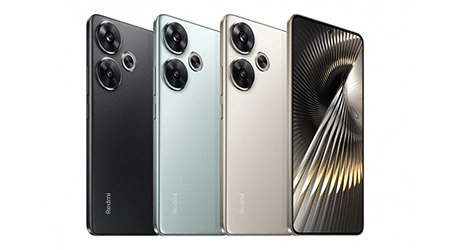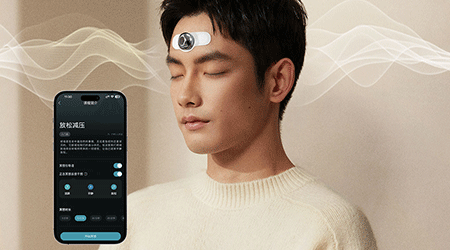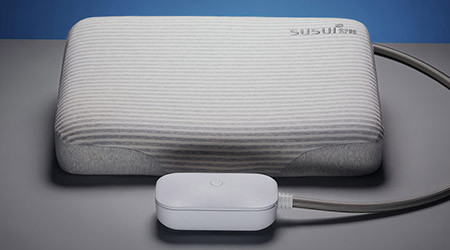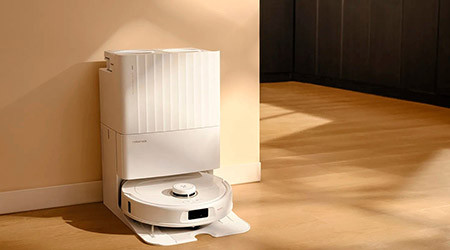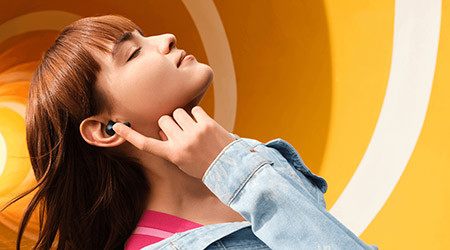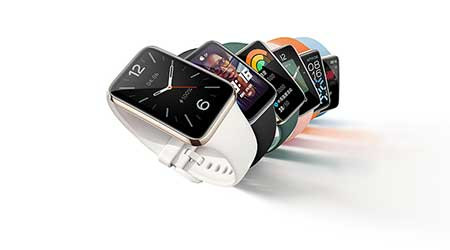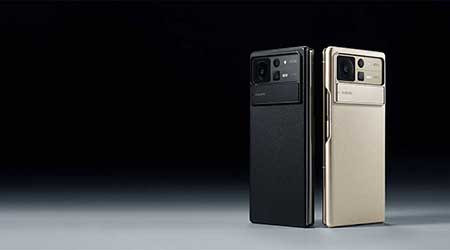Xiaomi MI4 Review
- 16.10.2014
- 956
- Joney Tour
- Add new comment
I’ve become a big fan of Xiaomi since I once bought an amazing small smartphone Mi 2S. This device is one of the best smartphones that I have ever owned.
In 2014 I was attracted by some new models from Xiaomi. Therefore, the purchase was not long in coming – soon I bought Mi4 in iBuyGou. As I have changed a few smartphones during the past year, Mi4 and OnePlus One tend to be among my favorites. Mi4, however, has a biiit greater advantage. Probably the reason for this may be that I prefer to choose smartphones of a smaller size. In other words, I prefer smartphones that easily fit into my pocket.
Given the fact that I frequently ride my bike and keep my phone rather in the pocket than anywhere else, the 5.5 inch smartphones are not my cup of tea as they do not fit into my pocket (in a sitting position). Thus, Xiaomi Mi4 hit the bull's-eye considering its dimensions.
Unpacking
Design
The Mi4 looks like other popular smaqrtphones. One of the hallmarks of so-called “popular” smartphones is a specific bending. The design of Mi4 simultaneously combines some features of earlier Xiaomi models. Thus, if you love original designs, this smartphone is definitely not for you. And if not… Better pass by!
The framing of a smartphone is extremely thin - thinner than of any other smartphone that I’ve ever owned. I guess, it is this feature that allows Mi4 to fit into my pocket. A plenty of other phones also have thin frame, but the top and bottom panels of these devices look too intrusive. Fortunately, Mi4 is not one of them as its design provides convenient use even in one hand.
The edges of Mi4 are bevelled... or just narrow, so to speak. This is more noticeable on the front panel than on the back. It not only makes the smartphone look more elegant, but also simplifies the use of the device... so that your hands will not get any cuts. : P
The right side of Xiaomi smartphones traditionally contains buttons that allow removing and replacing the back cover. This feature distinguishes Mi4 from its previous version - Mi3 with a non- removable back panel. Xiaomi Mi4, in turn, gives you complete freedom of choosing the back panel. However, the battery in Mi4 is not removable.
The front panel of Mi4 resembles "you know which smartphone". At the top there is a small speaker hole. I like it when the speaker is on the same level with the ear, otherwise this hole is just a useless dusty slot. But not in this case.
On the left of the speaker there is a small black point containing proximity and light sensors. Further to the left there is a famous Mi logo. On the right side there is an impressive 8-megapixel front-facing camera.
At the bottom of the screen there is a standard set of buttons - "Features", "Home" and "Back". Depending on the firmware version (MIUI V5 or MIUI 6) the leftmost button functions as the menu button or a button for controlling running programs. In my case it is the last variant because I like the design of MIUI 6.
At the bottom of the smartphone there is a micro USB port, as well as protective grille that hides a speaker and a microphone. But before discussing the sound quality, it should be noted that the grille looks appropriate and fits into the general look of the smartphone.
On the left side of the smartphone there is nothing but a slot for SIM-card. On the right side there are pleasant to touch metal lock button and volume control buttons.
On the top side there is a standard 3.5mm headphone jack, as well as an infrared sensor. The IR is a pretty useful feature because it allows you to measure the distance between objects using a smartphone. However, its range is, unfortunately, not as great as we would like it to be.
Display
Among most 5-inch smartphones I’ve ever had, the very first place goes to Mi4 and OPPO Find 5. I really liked the last. However, I was forced to sell it due to financial circumstances. In any case, it is obvious that the Mi4 display does not inferior in image quality of OPPO Find 5. As I noted earlier, the 5-inch screen is the best solution for me. Hence, the display on Mi4 meets my requirements to the full.
I have one more smartphone that I use for Youtube and videos. However, I’ve noticed that I don’t need it so much since I bought Mi4.
The MIUI firmware (I have MIUI 6) allows you to choose one of three interface colors and one of two saturation modes. I like displays with natural color transmission, but here I chose "cold" color scheme. There were also “warm” variant, which looks a bit yellow, and the "standard" variant. I chose the "cold" one, but the "standard" variant is also good.
You can select one of the saturation modes - "brilliant" and "standard." The difference between these modes is not as noticeable as between color schemes. I chose the "standard" saturation mode because the "brilliant" tone makes the image look a bit warm. All in all, it is a matter of a personal preference.
It should be noted that Chinese smartphones had light leakage for a very long time. Fortunately, this smartphone doesn’t have this kind of a problem with the exception for a small leak on the lower right corner, which is almost imperceptible. This defect is nary significant and it doesn't force you to feel any discomfort.
In a nutshell, I would rate the display in 9 of 10 points, as well as the screen of OPPO FInd 5!
Camera
During 2013 the front-facing cameras on smartphones have been developing by leaps and bounds. Of course, there is some difference in performance, but it is not as significant as the performance changes (read: improvements).
I absolutely LIKE Xiaomi Mi4 as a cameraphone. Even though the camera in this smartphone doesn’t have a large number of pixels or a full set of features (such as time-lapse mode, for example), but the camera on Mi4 perfectly copes with capturing everyday life moments. And this, in my opinion, is the most important thing!
The manufacturer managed to increase photos accuracy by adding to the camera an ultrafast focusing function. Now I can capture even the most fast-moving elements! Talking about the camera performance, I would put Mi4 second after OPPO Find 7 (which, to my surprise, is equipped with the same sensor IMX214 as Mi4! But, as it turned out, the sensor makes a huge contribution to image quality).
Mi4 largely exceeds Mi3. Both models are characterized by excessive color saturation; but the brightness of Mi4 is a little subsided so that the image looks more realistic. MIUI 6 also has its hardware drawbacks, but overall I'm satisfied.
At first, when I started using a smartphone, I was faced the problem of camera focusing in macro mode. This problem was soon solved thanks to the numerous OTA updates.
Still, the camera a bit lacks functionality. This, I hope, will be solved with future OTA updates. As a rule, Xiaomi releases updates fairly often – usually the updates are released weekly.
The camera also supports 4K video recording, though, it does not matter for me. If you do not use 4K, also known as UHD TV – it is of no interest for you, too!
Another interesting feature of Mi4 is the "focus change" function. As it is clear from the name, this function allows you to focus on a particular object after pressing the shutter button. I am pleased to report that the "focus change" function works perfectly well!
It was interesting for me to test this feature. It works without any difficulties due to the fact that Xiaomi introduced the 0.3-second focusing in its smartphones. Then I entered the file system and found that the phone took a few photos (4 if I'm not mistaken) with a focus on different parts, so that you have an ability to change the focus at the moment of taking a picture. Brilliant, isn’t it? (Interestingly, that another sensor would be needed to implement this feature in HTC smartphones J).
Battery
Frankly, I was pleasantly surprised by the Xiaomi Mi4 battery life. Even though it is not as great as in OnePlus One, it almost does not affect the use. On the other hand, the display is bright and convenient, so that you can work there for 6 hours (depending on Android version) before you’ll need to recharge the battery. By the way, I advise you to make sure that you use the original charger unit supplied with Xiaomi Mi4. Otherwise, get ready to spend an additional 4-5 hours to get the device fully charged. Original Mi4 charger unit charges the device very quickly, like any other charger unit (even at 2A). Since Xiaomi never advertised VOOC, I am convinced that behind such a rapid charging time there is a certain secret (of course, if it is not the merit of the processor Qualcomm :D).
The activity of my use of Mi4 varies from day to day. Most of the time I still have 50% charge at the end of the day when the phone has been used 18-19 hours without recharging. I think the performance is pretty good as for the 5-inch display, especially as bright as Mi4.
To make the length of the battery life clear I would list the most frequently used applications. They are: Feedly, Chrome, WhatsApp, Pocket, Gmail and a few others.
Overall, I would rate the battery life of Mi4 at 9 of 10 points. However, please note that it took a few weeks for a device to reach this level; at first, the situation was much worse. The reason for this could also be in a MIUI 6 firmware, but I suspect that the problem lies in hardware features.
MIUI 6
It's hard not to notice that Mi4 works on MIUI firmware. This is evident not only due to the increased functionality and a very attractive appearance of the interface, but also due to the fact that the media prefer to criticize the MIUI firmware. I do not blame them for it. MIUI firmware really looks like iOS, but its structure rather recalls Android. Before claiming that the MIUI firmware is a copy of iOS, do not forget to consider its pros and cons. Undoubtedly, MIUI is multifunctional and very easy to use, but it takes some time to get used to it. Especially - if you have been using another Android device before.
Compared to previous versions, MIUI 6 has significant functional improvements and more attractive appearance. Many of the inaccessible before aspects are now easily accessible, which creates a favorable impression to its customers. Now you have the ability to easily switch between alternative operating system shells and other default applications, which earlier was something of a fantasy.
Conclusion
During the previous year I had the opportunity to try many different smartphones, including such models as HTC One M8, OPPO Find 5, Find 7, Xiaomi Mi 3 and, of course, OnePlus One... Now guess, which one of smartphones is my favorite? Right - it is Xiaomi Mi4! Of course, my choice is subjective, because many of today's users prefer smartphones with more than 5 inches screens. Personally I belong to the old school.
If the performance of the smartphone will stay as high as it is now, I am ready to use Mi4 as my main smartphone for the next year. As I’ve mentioned before, one of the most important component of the smartphone for me is the battery. The battery of Mi4 meets my requirements to the full. The battery life lasts almost the same time as in Mi 2S with a 3200 mAh battery! (Note, that Mi 2S is equipped with just a 4.3-inch 720p screen).
A full set of features, such as the proximity sensor (it requires a special application in English) fully justifies the cost of a smartphone. Concluding, I would admit that I am eagerly waiting for Xiaomi Mi4 to be released in the world market - far beyond India and China. Here then we'll talk!

